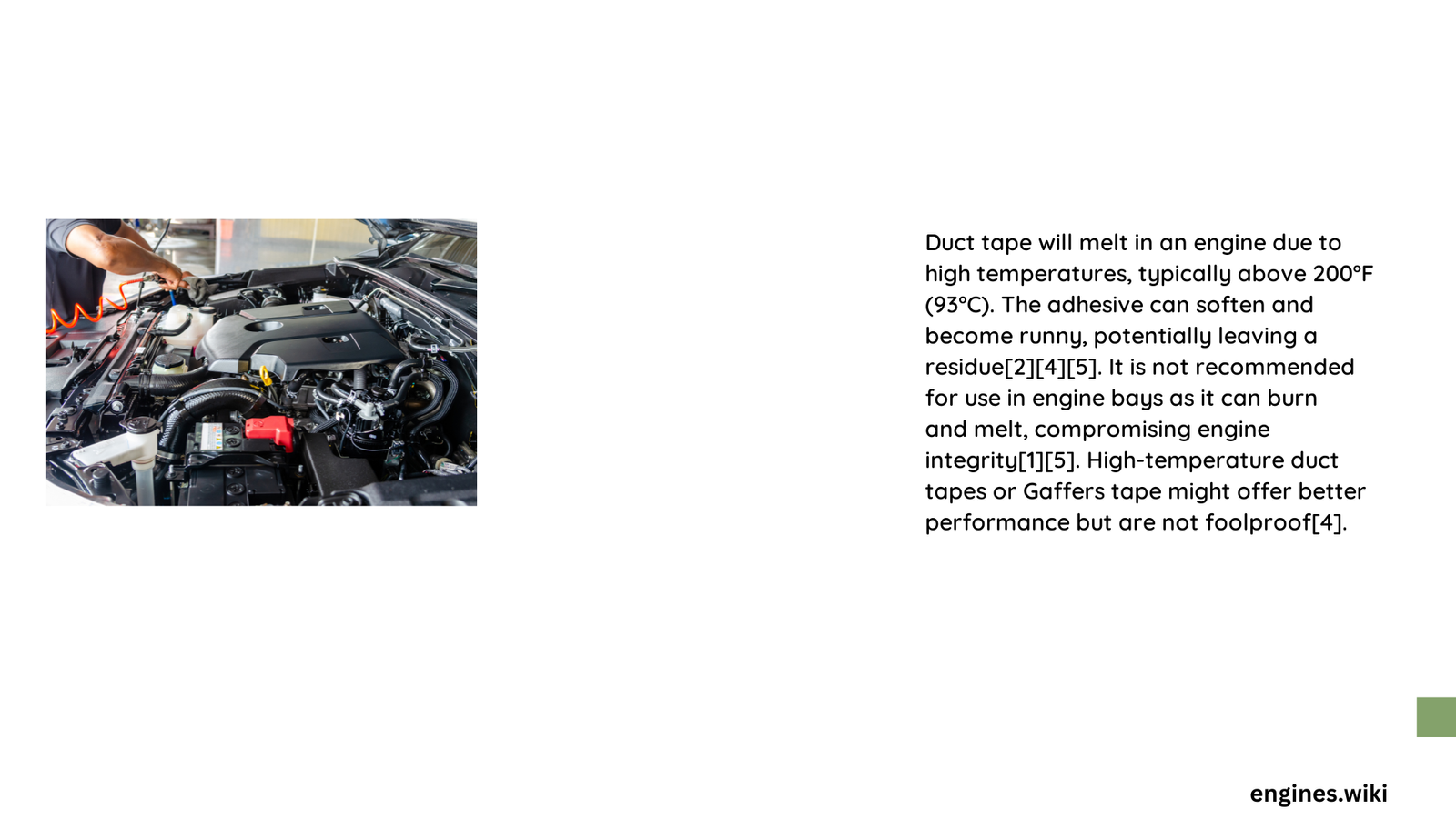Vehicle engines operate at extreme temperatures that can rapidly compromise standard duct tape’s structural integrity. When exposed to typical engine temperatures ranging from 195°F to 250°F, duct tape will quickly lose adhesive strength, melt, and potentially create dangerous mechanical complications. This comprehensive guide explores the scientific reasons why using duct tape as a temporary engine repair solution is not just ineffective, but potentially hazardous to your vehicle’s performance and safety.
What Happens to Duct Tape at Engine Temperatures?
Duct tape is fundamentally unsuited for high-temperature automotive environments. Its basic composition begins to deteriorate well before reaching typical engine operating temperatures. Let’s break down the critical factors:
Temperature Breakdown Mechanism
| Temperature Range | Duct Tape Reaction | Potential Consequences |
|---|---|---|
| 140°F – 160°F | Adhesive softening | Initial structural weakness |
| 180°F – 200°F | Complete adhesive failure | Potential component separation |
| 220°F – 250°F | Material melting | Critical mechanical risk |
Why Duct Tape Fails in Engine Environments
Duct tape’s primary vulnerabilities in engine settings include:
- Rapid Adhesive Degradation: Loses bonding capability below 200°F
- Material Composition Limitations: Synthetic backing cannot withstand sustained heat
- Immediate Performance Collapse: Complete structural failure within minutes of exposure
Scientific Breakdown of Duct Tape Thermal Resistance

The molecular structure of standard duct tape cannot withstand prolonged exposure to engine temperatures. Polyethylene-based adhesives and cloth backing rapidly break down when confronted with consistent heat above 180°F.
Comparative Heat Resistance Analysis
- Duct Tape Melting Point: 180°F – 200°F
- Average Engine Coolant Temperature: 195°F – 220°F
- Exhaust System Temperature: 250°F – 500°F
Recommended Alternatives for High-Temperature Repairs
Instead of risking catastrophic engine damage with duct tape, consider these professional-grade solutions:
- High-Temperature Silicone Tape
- Aluminum Foil Repair Tape
- Fiberglass Reinforced Repair Patches
- Professional Mechanical Repair
Critical Warning: Potential Risks of Using Duct Tape
Attempting to use duct tape as an engine repair solution can lead to:
- Immediate adhesive failure
- Potential fluid leakage
- Risk of electrical short circuits
- Potential fire hazards
- Comprehensive engine damage
Expert Recommendation
Professional mechanics unanimously agree: duct tape is never an acceptable solution for engine repairs. The minimal cost savings are dramatically outweighed by potential catastrophic mechanical failures.
Technical Conclusion
Duct tape will unequivocally melt in an engine environment. Its thermal properties make it completely unsuitable for any automotive repair involving heat-exposed components. Always consult a professional mechanic for proper engine maintenance and repairs.
Practical Takeaway
Remember: Just because duct tape works for household repairs doesn’t mean it’s suitable for high-stress, high-temperature automotive applications.
Technical Specifications
- Maximum Duct Tape Temperature Tolerance: 180°F
- Typical Engine Operating Temperature: 195°F – 250°F
- Recommended Repair Method: Professional mechanical intervention
Reference:
– SAE International Thermal Engineering Standards
– Automotive Repair Technical Guidelines
– Material Science Heat Resistance Research
